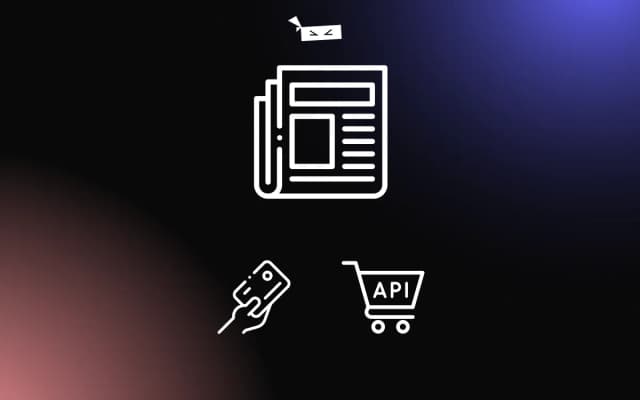
Let’s start with the bottom line:
Building apps for e-commerce platforms is hard.
Background
E-Commerce platforms (such as Shopify, BigCommerce, Wix, WooCommerce, etc.) are great for people who want to build and manage online shops. They provide the best tools for shop owners to manage inventory, customize their storefront, and start making revenues from online orders.
But, in the end, these platforms are limited, and this is why they allow developers to leverage their APIs and data to develop apps on top of them.
These apps are being used by merchants and their customers and they are quite varied. There are storefront widgets that increase conversions and enhance user experience, apps that collect data to improve inventory management, social proof apps, and apps that make drop shipping easy.
E-Commerce apps are widely used by online merchants and have become very popular. How popular? Shopify says that in 2020 the average merchant installed 6 apps on their store, and that developer partners earned $233M in 2020 alone.
The thing is…
If you ask any developer, who had experience building apps for e-commerce platforms, about their experience building those apps, you’ll get the same answer: “It was a nightmare“.
The Problems With E-Commerce Platforms For Developers
When you set on a journey to build an app for an e-commerce platform, you’re entering a world of pain.
It starts with the documentation. In order to build an app, you’ll need to read — a lot. And while some platforms do a nice job with their onboarding, by documenting everything, others don’t.
Once you wade through the endless documentation and understand the different types of apps each platform allows you to build, the next thing you encounter will be how to handle authentication.
Surprisingly, although most of the platforms use OAuth, each one of them implements the authentication flow differently. So, you’ll need to learn exactly how it works on each platform separately while using tunnels (and in some cases, you will have to debug the code in production because you’ll have to contact the platforms in order to change the auth endpoints).
I hope you’re still here because there’s more!
The next thing you’ll encounter will be APIs. Let’s take the Product resource as an example.
In Shopify a product object looks like that:
interface IShopifyProduct {
id?: string;
title?: string;
body_html?: string;
vendor?: string;
product_type?: string;
created_at?: string;
updated_at?: string;
handle?: string;
variants?: {
id?: string;
product_id?: string;
price?: string; // no unit supported in api
weight?: number;
weight_unit?: string;
}[]
images?: IShopifyProductImage[];
status?: 'active' | 'archived' | 'draft';
tags?: string;
}
interface IShopifyProductImage {
product_id?: number;
id?: number;
title?: string;
position?: number;
created_at?: string;
updated_at?: string;
alt?: string;
weight?: number;
weight_unit?: 'kg' | 'lb';
price?: number | string;
src?: string;
variant_ids?: string[];
admin_graphql_api_id?: string;
}And in BigCommerce like this:
interface IBigCommerceProduct {
id?: number;
name?: string;
description?: string;
date_created?: string;
date_modified?: string;
custom_url?: {
url?: string;
};
type?: 'physical' | 'digital';
weight?: number;
price?: number;
primary_image?: IBigCommerceProductImage;
images?: IBigCommerceProductImage[];
}
interface IBigCommerceProductImage {
image_file?: string;
is_thumbnail?: boolean;
product_id?: number;
id?: number;
description?: string;
sort_order?: number;
date_modified?: string;
url_standard?: string;
url_thumbnail?: string;
url_tiny?: string;
}While in Wix it’s:
interface IWixProduct {
id: string;
name: string;
slug: string;
visible: boolean;
weight: number;
description: string;
sku: string;
productType: 'physical';
priceData?: {
currency?: string;
price: number;
};
media?: IWixProductMedia;
lastUpdated?: string;
}There’s no standardization, each platform sees things differently. This is fine unless you want to build an app that supports multiple platforms.
Lastly, we come to another aspect that you will encounter — monetization.
If you’re building an app, either for yourself or for a company you’re working for, your end goal is, obviously, to earn money off of it.
While some platforms like Shopify and Wix give you some tools to monetize your app through different business models, most, if not all other platforms don’t give you these tools.
This means that, in addition to everything else, you’ll need to integrate payment solutions and develop these integrations yourself.
Common Ninja: A New Era Of E-Commerce App Development
We are very familiar with these problems. In the past 10 years, we’ve developed dozens of apps for website-building and e-commerce platforms.
And, during those years we’ve also developed tools that helped us decrease the app development time for e-commerce platforms by 80%. This, in turn, led us to establish Common Ninja and offer these tools to any developer out there 🎉
Common Ninja is a platform for building & monetizing e-commerce apps. What we offer is, essentially, “One API to rule them all“.
You’ll work with a single API for consuming e-commerce resources such as products, orders, customers, etc. regardless of the platform your user/merchant is using.
You’ll always know what you get. If an e-commerce platform changes its API, we’ll take care of it behind the scenes so you won’t have to.
In addition, with Common Ninja, you’ll be able to monetize your app flawlessly, create subscription-based plans, and connect your app to popular payment providers like Stripe and PayPal.
Too good to be true? Probably. But this is us, and that’s what we do 🙂
Want to learn more? Go here:
https://www.commoninja.com/developers
If you have any feedback, question, or comment, we’re here.


